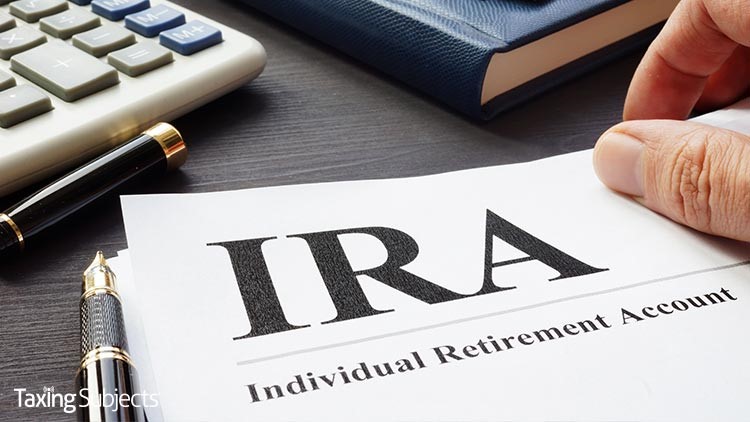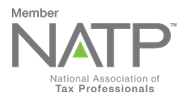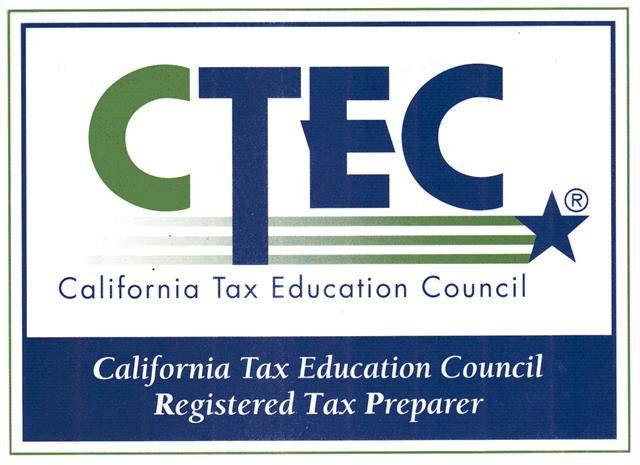
by Ambassador Tax Services, Inc. | Jun 30, 2020 | Tax Tips and News
Erin M. Collins, the nation’s new National Taxpayer Advocate, has issued her first report to Congress, which details the series of challenges—some met, some unmet—faced by the IRS this year. The challenges ranged from the COVID-19 pandemic and the subsequent aid and relief programs, to implementation of the Taxpayer First Act.
Collins prefaced the report with an admission that her tenure got off to a rocky start.
“On March 30, 2020, I had the honor and privilege of being sworn in as the third National Taxpayer Advocate,” Collins wrote. “Starting in the midst of a pandemic and witnessing IRS offices closing one by one was not the way I envisioned my role when I accepted the position, . . . but there also has been a silver lining in this experience: As I have participated in conference calls with members of my leadership team, TAS employees, and the IRS’s COVID-19 response team, I have been extraordinarily impressed by their commitment and focus on the health and safety of all employees during this pandemic, while still doing as much as possible to assist taxpayers.”
Collins also praised her predecessor, Nina Olson, who served from 2001-2019, and the very first National Taxpayer Advocate, Val Oveson, who served from 1998-2000. “Over the past 20 years, TAS has successfully assisted more than 4.5 million taxpayers by helping them resolve their tax problems and protecting their rights, and it has made hundreds of administrative recommendations adopted by the IRS and some 45 legislative recommendations enacted by Congress,” Collins wrote.
The Taxpayer Advocate says 2020 is a year fraught with challenges.
In the report, Collins praises the IRS for quick action during the developing COVID-19 pandemic, postponing more than 300 filing, payment, and other time-sensitive deadlines. The IRS also provided relief from compliance actions under its “People First Initiative” and distributed some 160 million Economic Impact payments (EIPs). Collins says these are balanced against some areas where the IRS didn’t so so well:
- Taxpayers who filed a 2019 paper return and are entitled to refunds may be in for a long wait. The IRS had to suspend the processing of paper tax returns, and as of May 16, it estimated it had a backlog of 4.7 million paper returns. Although the IRS is reopening some of its core operations, it is not clear when it can open and process all the returns sitting in mail facilities.
- Some taxpayers whose returns were mistakenly flagged by IRS processing filters are experiencing lengthy delays in receiving their refunds. All tax returns claiming refunds are passed through filters designed to detect identity theft and other types of refund fraud. As TAS has documented, some of these filters produce “false positive rates” of more than 50 percent (meaning that more than half the taxpayers whose returns are stopped by certain filters are entitled to the refunds they claimed). Affected taxpayers are often asked to mail in documentation to substantiate their claims, but the IRS has not opened or processed many of their responses, delaying their refunds.
- Taxpayers who have needed help from the IRS have had difficulty obtaining it. The IRS shut down its Accounts Management telephone lines, so taxpayers could not reach a live assistor by telephone. The IRS shut down its Taxpayer Assistance Centers, making it impossible for taxpayers to obtain in-person assistance. The IRS also shut down its mail facilities, so it was unable to log or process taxpayer responses to compliance notices.
- IRS systems prepared over 20 million notices during the pandemic that could not be mailed due to closure of notice production centers between April 8 and May 31. The IRS is mailing these notices now. However, some collection notices bear old dates and include response deadlines that often have passed. The IRS plans to include “inserts” with these notices explaining that response deadlines have been postponed, but the report expresses concern that receiving compliance notices with response deadlines that have passed will be confusing and concerning to many taxpayers who may not read the inserts.
What were the CARES Act challenges faced by taxpayers?
The report says the IRS generally did a good job in implementing the CARES Act, but here too, challenges remain:
- Individuals who did not receive some or all of their Eonomic Impact Payments may have to wait until next year to receive them. To date, the IRS has taken the position that most taxpayers who did not receive their full payments must wait until they file their 2020 income tax returns to claim the amounts as credits against their 2020 tax liabilities, even though there is no legal constraint on the IRS’s ability to issue additional EIP amounts as advance refunds during 2020.
- Employers are struggling to determine whether they qualify for the Employee Retention Credit (ERC) and in what amounts. The ERC is a complex, refundable tax credit that requires employers to determine when a trade or business was fully or partially suspended by government order; the employer’s number of full-time employees; what constitutes qualified wages; whether a business’s operations post-COVID-19 are comparable to its pre-COVID-19 operations; and the application of aggregation rules. Despite IRS efforts to issue guidance, additional clarification is needed.
- Businesses are facing challenges when seeking to utilize the CARES Act provision that authorizes the use of net operating losses to offset taxable income in prior years (and in some cases to receive refunds). For businesses to determine the optimal application of the CARES Act provisions so they can exercise their right to pay no more than the correct amount of tax, they may need to create and run complex financial models involving multiple tax years.
What was in the National Taxpayer Advocate’s 2020 filing season review?
Usually, the National Taxpayer Advocate’ report to Congress includes a wrap-up on the year’s income tax filing season. Since the filing and pay deadlines were extended due to the COVID-19 pandemic, filing season is still ongoing. But Collins notes that the effects of the various IRS closures and shutdowns had an enormous effect on taxpayers. Among those setbacks were:
- Due to campus and office closures, the IRS could not staff phone lines to assist callers beginning the week of March 21.
- After March 20, taxpayers no longer had access to face-to-face customer service.
- There is a large backlog of incoming mail (about 10 million pieces of mailed tax returns or correspondence sitting in trailers at IRS campuses). The IRS could not process paper returns and process or respond to other written correspondence from taxpayers.
- The IRS has sent only a very limited volume of outgoing taxpayer correspondence.
- There was a substantial reduction in Volunteer Income Tax Assistance, Tax Counseling for Elderly, and Low Income Taxpayer Clinic services.
- The National Distribution Center was shut down, depriving taxpayers of a means to acquire pre-printed forms.
Because of the IRS’s limitations and the postponed filing deadline, an assessment of the filing season is necessarily incomplete. The report says TAS may provide a more thorough analysis later.
The report also takes a look at how the recommendations from the previous report to Congress were viewed by the IRS. The Internal Revenue Code gives the National Taxpayer Advocate authorization to submit administrative recommendations to the IRS Commissioner. The agency is required to respond within three months. However, in 2019 the Acting Taxpayer Advocate made 19 administrative recommendations. The IRS claims it is not required to respond to them and has made only general narrative responses.
Collins writes the intent of the federal statute is clear.
“If the National Taxpayer Advocate makes an administrative recommendation to mitigate a taxpayer problem – regardless of whether or where it has appeared in a report – the IRS should evaluate it and respond in writing so that TAS, Congress, and the taxpaying public know whether the IRS plans to implement the recommendation and, if not, why not. General narrative discussions that do not address recommendations directly fail to satisfy this objective.”
– Story provided by TaxingSubjects.com

by Ambassador Tax Services, Inc. | Jun 30, 2020 | Tax Tips and News
When will the IRS start processing CAF requests?
The Internal Revenue Service last Thursday announced that it is beginning to process Centralized Authorization File requests, like Forms 2848 and 8821. This comes two weeks after the IRS issued an update for reporting agents saying they have resumed processing Forms 8655, signaling that the IRS is trying to address its substantial workload in the looming shadow of the July 15 deadline.
As previously noted on Taxing Subjects, CAF was suspended in April alongside a number of other services to prevent IRS employees from contracting COVID-19. While the coronavirus has not gone away, the IRS said it is taking steps to safely address its backlog and start processing new requests. Social distancing is one of the methods being used at their facilities: “CAF units at Memphis and Ogden are currently operational but are operating with limited staffing.”
How can tax preparers help CAF processing go faster?
Having fewer employees on site to process power-of-attorney and tax-information-authorization requests could mean longer wait times than normal, which would be worse if there are issues with submissions. That’s why the IRS is asking preparers to help reduce duplicate-form delays by double checking documents before faxing them—and, of course, only sending one fax.
“Duplicate requests (sending the same request for access to a taxpayer’s account more than once) put a strain on operations,” the IRS explained. “Sending in duplicate Forms 2848 (Power of Attorney), and 8821 (Tax Information Authorization), results in processing delays, as all requests must be researched and reviewed.”
Source: IRS e-News for Tax Professionals 2020-26
– Story provided by TaxingSubjects.com

by Ambassador Tax Services, Inc. | Jun 27, 2020 | Tax Tips and News
A new report to Congress from one of the Internal Revenue Service’s advisory panels is calling for the government to do something unusual: Fully fund the IRS budget request.
The request comes from the Electronic Tax Administration Advisory Committee, or ETAAC, a panel comprised of tax industry leaders, IRS representatives and other specialists in the computing and tax fields.
ETAAC’s 95-page report puts forth four major building blocks to complete what it sees as the end goal: to improve taxpayer service and increase compliance. The panel sees the necessary steps to the goal as:
- Fund, modernize and enable the IRS;
- Defend and protect our tax system;
- Improve the taxpayer experience; and
- Strengthen the Security Summit and the Information Sharing & Analysis Center
The report breaks each of these tasks down to their component parts, revealing a comprehensive plan to improve the American income tax system.
ETAAC wants Congress to fund, modernize and enable the IRS.
First and foremost, the committee is calling for Congress to fully fund the IRS’ FY 2012 budget. “Congress should fully fund the IRS’s FY2021 budget request to enable the IRS to deliver 21st Century taxpayer experiences, narrow the $380 billion Tax Gap to meet the nation’s pressing fiscal needs, protect the tax system and build a modern information system infrastructure” the report states.
Appropriations should be allocated across the IRS’ four appropriations accounts to allow the agency to achieve its stated goals of taxpayer service, enforcement and modernization.
Other goals within this heading include granting the IRS request for an adjustment in the FY2021 Program Integrity Cap and enabling government-wide digital identity policies and initiatives.
Also included is a call to provide the IRS with the authority and necessary funds to enforce security standards. “Congress should grant the IRS the clear legal authority and provide the associated funding to issue and enforce appropriate information security standards and guidance in the area of tax administration, which could include adopting existing or establishing new administrative, technical and physical safeguards, implementing required education and training, and providing ongoing guidance,” the report says.
Defending and protecting the tax system from identity theft tax refund fraud is a priority.
One of the linchpins in the IRS fight against Identity Theft Tax Refund Fraud (IDTTRF) has been the Security Summit. The ETAAC sees further collaboration with the Security Summit to evaluate and develop responses to potential attacks on the tax system. In a similar vein, the report also calls for engagement with the Federal Trade Commission (FTC) to assess the impact and how best to implement proposed changes to FTC’s Safeguards Rule.
The goal here, the report states, is to “to educate and enable the tax preparation community to comply with any new security requirements without the significant and unnecessary disruption of this community’s ability to serve taxpayers.”
The report also calls for study of the tax preparer community to understand how it operates, determine the state of information security practices and vulnerabilities, and to identify high-level strategic options — and their costs. The study, ETAAC says, should be carried out by a qualified third party.
It’s time to improve the taxpayer experience.
The IRS should tap into experts outside the agency to identify and possibly pilot promising technologies, the report finds. Also on the drawing board: taxpayer-controlled “real-time” protective features for individual and business accounts; expanded collaboration on design and launch of the IRS 1099 internet-based service; and increased accuracy of the information surrounding the EIN responsible party.
How do we strengthen the Security Summit and ISAC?
The Taxpayer First Act (TFA) made a number of changes to the IRS a matter of law. However, ETAAC wants to ensure that the IRS’ coordination among advisory groups is maintained. It’s calling for an evaluation of TFA’s impact on the Security Summit while looking to sustain the Summit’s effectiveness as well as the energy and commitment of its participants.
Other recommendations include collaboration with state and industry members of the Information Sharing & Analysis Center (ISAC) to implement provisions of the TFA, improving the on-boarding process for new ISAC members while offering a more structured ISAC training program.
Lastly, the report calls for developing and implementing a system that enables electronic EFIN validation in real time for authorized third parties. Once this capability is launched and tested, ETAAC would like to see the same capability expanded to real-time PTIN validation.
What is an immediate concern for the tax industry?
While the report is positive about the effect its proposals would have on the American tax system, it reminds us that Identity Theft Tax Refund Fraud is still a very real threat, both at the federal and state levels.
“The wholesale theft of huge volumes of personal information has provided criminals and other bad actors with detailed and accurate taxpayer information. Our sophisticated adversaries can use this information to create and file returns that look nearly identical to those of the legitimate taxpayer. It would be great if there were a silver bullet to make it easy for the IRS to spot these fraudulent returns among the hundreds of millions of legitimate returns. Unfortunately, there is no silver bullet.”
– Story provided by TaxingSubjects.com

by Ambassador Tax Services, Inc. | Jun 25, 2020 | Tax Tips and News
The Internal Revenue Service is giving tornado, thunderstorm and flooding victims in three states extra time to file their various tax returns and make tax payments.
Severe storms raked parts of Mississippi, Tennessee and South Carolina in April; those areas have designated as qualified for individual assistance by the Federal Emergency Management Agency (FEMA). Currently, this includes Clarke, Covington, Grenada, Jasper, Jefferson Davis, Jones, Lawrence, Panola and Walthall counties in Mississippi; Bradley and Hamilton counties in Tennessee; and Aiken, Barnwell, Berkeley, Colleton, Hampton, Marlboro, Oconee, Orangeburg and Pickens counties in South Carolina.
Taxpayers in these counties—and counties added later to the federal disaster declaration—will have until Oct. 15, 2020, to file their individual and business tax returns and to pay any tax due.
Taxpayers in areas added to the federal declaration later will automatically get the same filing and payment relief. The current list of eligible counties and towns is available on the disaster relief page on IRS.gov.
What are the terms of the disaster area tax relief?
The exact extent of the tax relief in this new package is laid out in an IRS release:
“The tax relief postpones various tax filing and payment deadlines that occurred starting on April 12. As a result, affected individuals and businesses will have until Oct. 15, 2020, to file returns and pay any taxes that were originally due during this period. This includes 2019 individual and business returns that, due to COVID-19, were due on July 15. Among other things, this also means that affected taxpayers will have until October 15 to make 2019 IRA contributions” the IRS continues.
The Oct. 15 deadline also applies to estimated tax payments for the first two quarters of 2020 that were due on July 15, and the third-quarter estimated tax payment normally due on September 15. It also includes the quarterly payroll and excise tax returns normally due on April 30 and July 31.
Do you need to apply for disaster area tax relief?
The IRS automatically provides such filing and payment relief to any taxpayer who has an address on file within the disaster area. Taxpayers don’t need to contact the agency to see if they qualify.
If a taxpayer in the disaster area gets a late-filing or late-payment penalty notice from the IRS that has an original or extended filing, payment or deposit due date that falls within the postponement period, relief is only a phone call away. The taxpayer can merely call the phone number in the written notice to have the penalty abated.
Sometimes a taxpayer may live outside the disaster area, but has records needed to meet a deadline inside the stricken area. If the deadline occurs during the postponement period, the IRS will work with the taxpayer to work out a solution. This include workers assisting relief activities and who are affiliated with a recognized government or philanthropic organization.
Individuals and businesses in a federally declared disaster area who suffered uninsured or unreimbursed disaster-related losses can choose to claim them on either the return for the year the loss occurred (in this case, the 2020 return normally filed next year), or the return for the prior year. This means that taxpayers can, if they choose, claim these losses on the 2019 return they are filling out this tax season.
Those taxpayers who qualify for relief but live outside the federally declared disaster area need to call the IRS at 866-562-5227 once normal operations resume. For more information on services currently available from the IRS, visit the IRS Operations and Services page at IRS.gov/coronavirus.
Any taxpayer claiming a loss due to these storms should write the appropriate FEMA declaration number on the return. these numbers are: 4536 for Mississippi; 4541 for Tennessee; and 4542 for South Carolina. For more details, check out Publication 547.
For general information about disaster recovery, visit disasterassistance.gov.
– Story provided by TaxingSubjects.com

by Ambassador Tax Services, Inc. | Jun 23, 2020 | Tax Tips and News
The COVID-19 pandemic has forced millions of Americans to take extraordinary steps just to stay afloat financially. For those taxpayers who might want to take distributions against their retirement plans or even borrow against their plans, the IRS has announced new relief.
The relief measures are outlined in IRS Notice 2020-50, allowing expanded access to plan distributions and plan loans. The new guidance expands the categories of individuals who are eligible for these kinds of distributions and loans (termed “qualified individuals”).
It also provides guidance and examples on how qualified individuals will report the tax treatment of such distributions and loans on their federal income tax returns.
The CARES Act says qualified individuals may treat distributions up to $100,000 made from their eligible retirement plans (including IRAs) between January 1 and Dec. 30, 2020 as coronavirus-related.
What’s at stake?
A coronavirus-related distribution is not subject to the 10% additional tax that otherwise generally applies to distributions made before an individual reaches age 59 ½. In addition, a coronavirus-related distribution can be included in income in equal installments over a three-year period, and an individual has three years to repay a coronavirus-related distribution to a plan or IRA and undo the tax consequences of the distribution.
The CARES Act also allows plans to relax certain rules for qualified individuals when it comes to plan loan amounts and repayment terms. In particular, plans can suspend loan repayments that are due from March 27 through Dec. 31, 2020; in addition, the dollar limit on loans made between March 27 and Sept. 22, 2020 is raised from $50,000 to $100,000.
Notice 2020-50 expands the definition of who is a “qualified individual.” Factors such as reductions in pay, rescissions of job offers, and an individual’s delayed start dates are taken into account.
The adverse financial consequences to an individual that arise from the impact of the coronavirus on the individual’s spouse or household member are also considered.
Who is qualified?
As expanded under Notice 2020-50, a qualified individual is anyone who:
- is diagnosed, or whose spouse or dependent is diagnosed, with the virus SARS-CoV-2 or the coronavirus disease 2019 (collectively, “COVID-19”) by a test approved by the Centers for Disease Control and Prevention (including a test authorized under the Federal Food, Drug, and Cosmetic Act); or
- experiences adverse financial consequences as a result of the individual, the individual’s spouse, or a member of the individual’s household (that is, someone who shares the individual’s principal residence):
- being quarantined, being furloughed or laid off, or having work hours reduced due to COVID-19;
- being unable to work due to lack of childcare due to COVID-19;
- closing or reducing hours of a business that they own or operate due to COVID-19;
- having pay or self-employment income reduced due to COVID-19; or
- having a job offer rescinded or start date for a job delayed due to COVID-19.
The Notice specifies that employers can choose whether these new coronavirus-related rules are implemented. It also notes that qualified individuals can claim the tax benefits of coronavirus-related distribution rules even if their plan provisions aren’t changed.
The guidance provides that administrators can rely on an individual’s certification that he or she is a qualified individual (and provides a sample certification). However, an individual must actually be a qualified individual in order to get favorable tax treatment.
Notice 2020-50 further provides employers with a safe harbor procedure for implementing the suspension of loan repayments that are otherwise due through the end of 2020. The notice also mentions there may be other reasonable ways to administer these rules.
For more information about how the CARES Act rules for COVID-related distributions and loans from plans can apply, employers, financial institutions and individuals should refer to Notice 2020-50.
This tax relief and other information related to the effects of COVID-19 on federal income tax is available on the IRS Coronavirus Tax Relief pages on the IRS website.
– Story provided by TaxingSubjects.com











